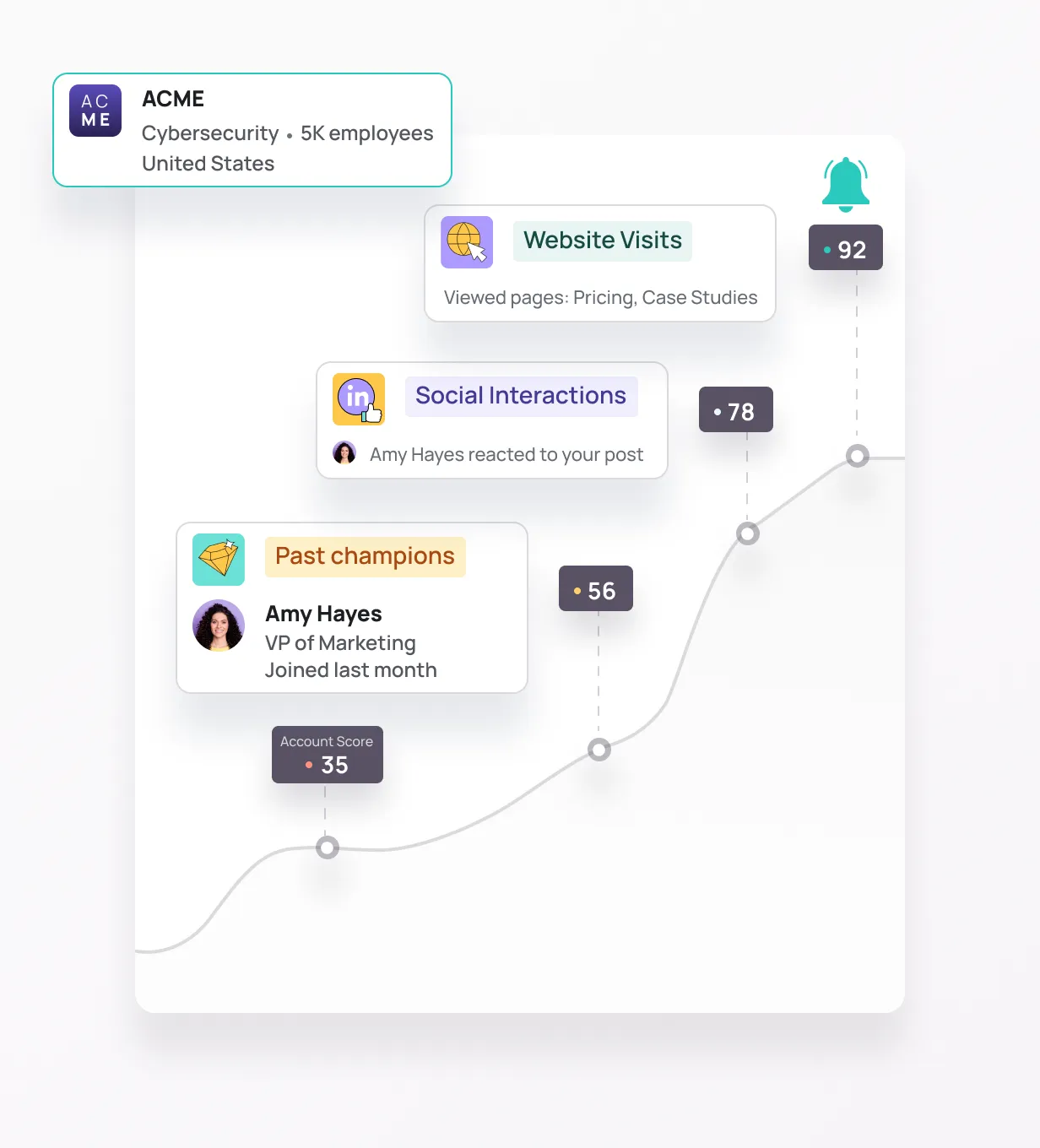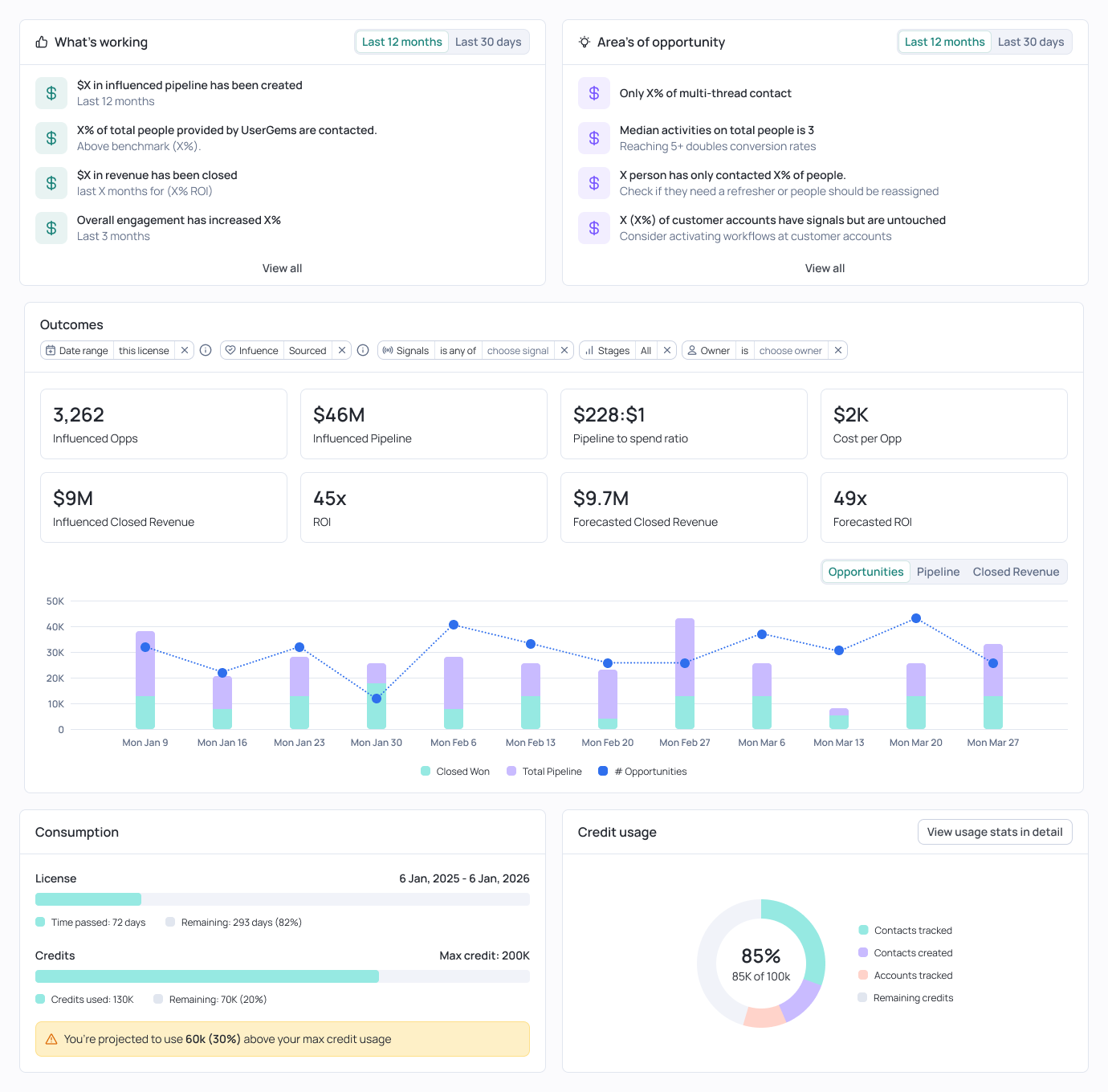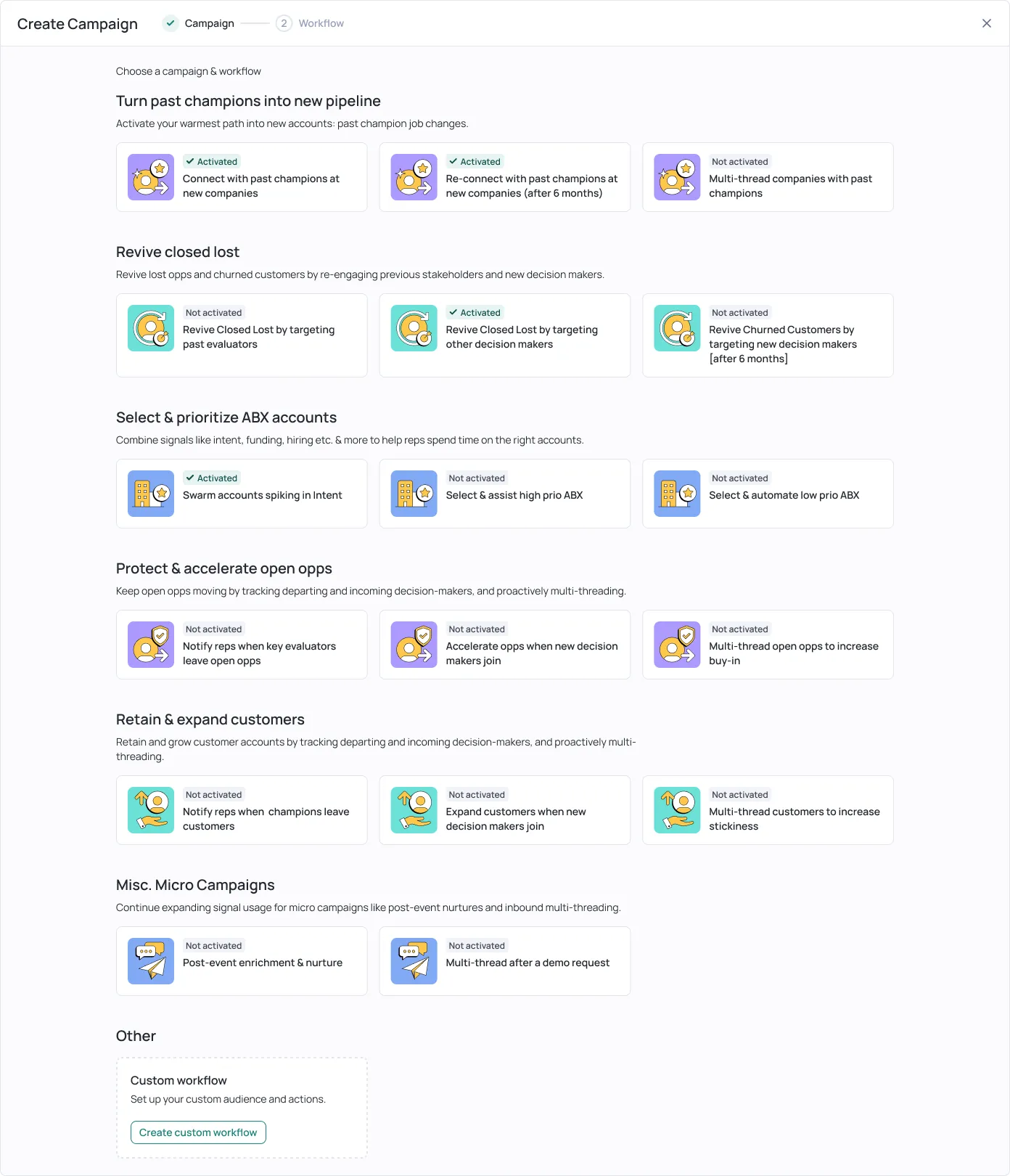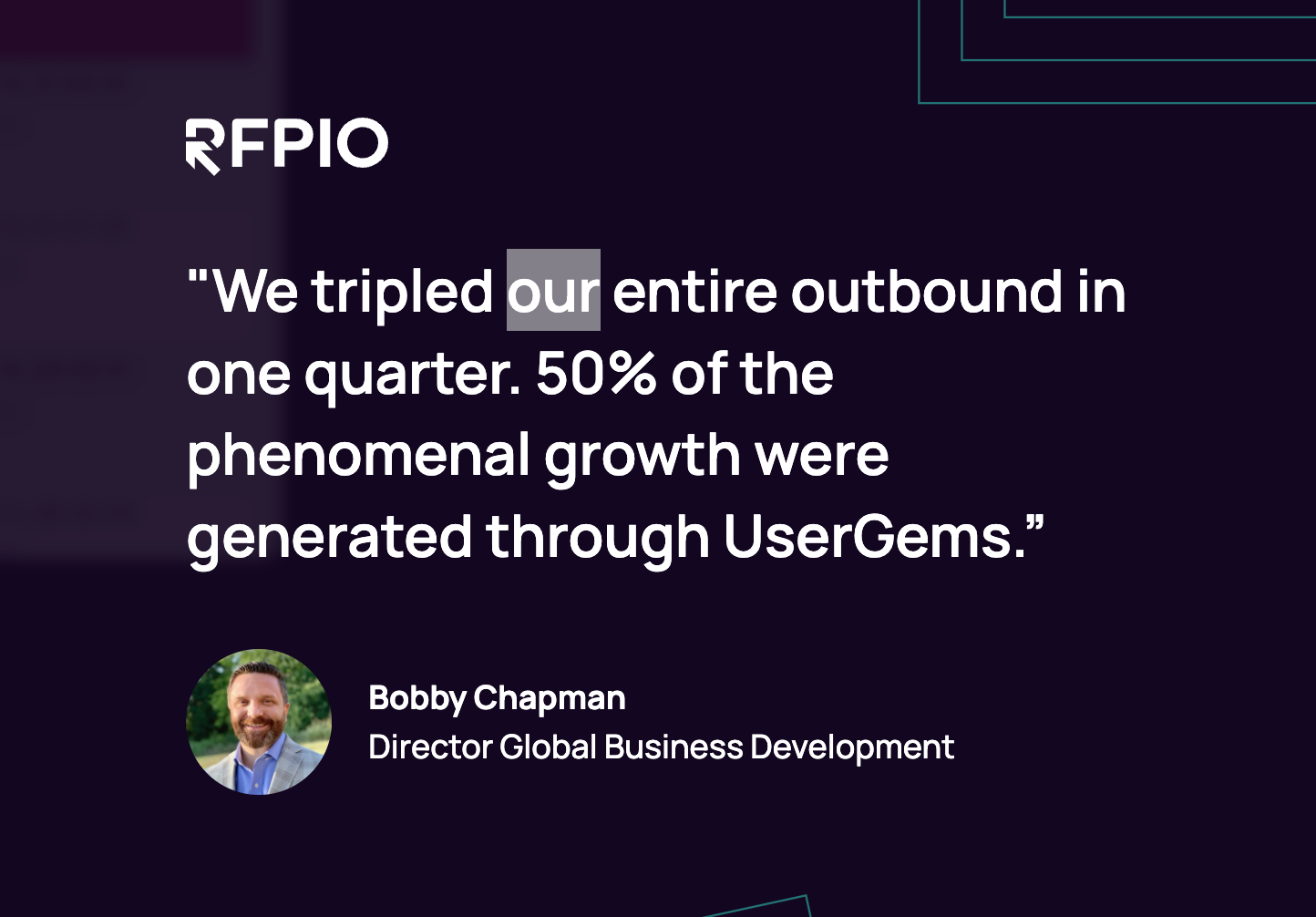The market for AI Sales Development Representatives (SDRs) is exploding. Every week, a new tool emerges promising to automate your outreach, flood your calendar with meetings, and transform your sales pipeline. For sales and marketing leaders, the noise is deafening.
The real challenge isn't finding an AI SDR tool; it's understanding which features actually matter. How do you separate the genuinely transformative capabilities from the nice-to-have gadgets? What should you look for to ensure you’re investing in a platform that will deliver tangible ROI, not just a list of flashy features?
This guide provides a clear framework for evaluating this new class of technology. We've broken down the anatomy of a modern AI SDR into three core capability clusters and 9 key features. By understanding them, you'll have a clear framework for evaluating any tool and making a smart investment that drives real pipeline.
Sales intelligence and prospecting features
This is the brain of the AI SDR. These features determine the quality and timing of your outreach, moving your team from a reactive to a proactive sales motion. Without a strong intelligence layer, even the most sophisticated messaging will fail to connect.
1. Buying signal detection
This is the AI's ability to identify and surface specific events that indicate a prospect or account is entering a buying cycle. These signals include job changes (especially past customers or champions starting new roles), new executive hires at target accounts, company funding announcements, or even spikes in hiring for roles your product serves.
This is arguably the single most important feature because it solves for timing. Instead of reaching out to a cold list, buying signal detection allows you to engage prospects at the precise moment they are most receptive to new solutions. This dramatically increases response rates and ensures your team is focused on opportunities with the highest probability of closing.
2. Automated prospecting and list building
This feature enables AI to autonomously search for and build lists of net-new leads that fit your Ideal Customer Profile (ICP). Based on the criteria you set (like industry, company size, and technology used), the AI can generate a highly-targeted prospect list, eliminating the hours sales reps spend manually searching through databases or LinkedIn.
The primary benefit here is efficiency. Automated prospecting directly addresses one of the most time-consuming parts of the sales development process. It frees up your human SDRs from the manual grind of list building, allowing them to reallocate their time to higher-value sales activities like personalizing outreach for key accounts and having strategic conversations.
Related → The modern guide to account-based prospecting
3. Real-time data enrichment
Once a lead is identified, this feature automatically appends their profile with accurate, verified contact and account information. This typically includes a verified email address, a direct-dial phone number, a LinkedIn profile URL, and other relevant company details.
High-quality data is the fuel for your entire outbound engine. Real-time enrichment ensures your team has the correct information to actually connect with prospects, which improves email deliverability and call connection rates. It also provides the essential raw material that the AI needs to effectively personalize outreach in the next stage of the process.
💡Pro tip: The most powerful intelligence comes from combining external buying signals with your own internal CRM data. This holistic view provides the ultimate context on why an account is a priority. This is why a platform like UserGems is designed to unify all your signals—its own, third-party, and your CRM data—into a single score to identify your warmest opportunities.

Related → 19 Best Data Enrichment Tools for Converting More Leads
Outreach and engagement features
Once the intelligence layer has identified who to contact and why, these features act as the "voice" of the AI SDR. They execute the outreach, engage the prospect, and convert interest into a tangible next step.
4. AI-powered message personalization
This goes far beyond a simple [First Name] mail merge or using pre-built templates. A sophisticated AI sales agent uses natural language processing to generate hyper-personalized messages based on the signals it has gathered. It can reference a recent company funding announcement, mention a new executive hire, or tailor the value proposition to a specific pain point inferred from the data.
This feature directly drives higher response rates to cold emails. In a world of generic, automated emails, a message that is genuinely relevant and context-aware immediately stands out. It shows the prospect you’ve done your homework and gives them a compelling reason to engage, dramatically improving the odds of getting a positive reply.
5. Drafting for multi-channel campaigns
This feature is about the AI's ability to prepare and draft all the necessary components for a multi-channel outreach campaign. It doesn't just write a single email; it can generate the initial message, follow-up sequences, and even call scripts. It then syncs these contacts and messages to your existing sales engagement platform (like Outreach or Salesloft) to be executed.
This ensures messaging consistency across your entire campaign. By having the AI draft all the touchpoints based on the same core buying signal, your reps can launch cohesive outreach sequences without spending hours writing copy.
6. Identiyfing meeting opportunities
This is the AI's ability to analyze email replies and identify positive buying intent. Instead of just tracking opens or clicks, this feature uses sentiment analysis to recognize when a prospect says "sounds interesting, tell me more" or "can you connect me with Jane in procurement?" and flags it for a human rep to take action.
This feature acts as a powerful filter, allowing your reps to ignore the noise and focus only on warm conversations. It ensures that no positive reply gets missed in a busy inbox and helps your team prioritize their time on the interactions that are most likely to convert into a booked meeting.
💡Pro tip: Anchor every AI-generated message to the specific campaign and buying signal that triggered the outreach. A generic value prop gets deleted, but an email that references a recent funding announcement or a new key hire immediately builds rapport. Gem-E, does this automatically, using its diverse set of signals to draft campaign-based outreach that is timely and relevant from the first sentence.
Workflow and optimization features
This is the central nervous system of the AI SDR. These features connect the AI's intelligence and outreach back to your core systems, ensuring the entire operation runs smoothly while providing the insights needed to get smarter over time.
7. CRM integration
This is the ability of the AI SDR to have a deep, two-way connection with your CRM system, such as Salesforce or HubSpot. It means the AI can both pull lead data from the CRM (like account history or lead ownership) to inform its actions and push data back in real-time (logging every email sent, call made, or meeting booked).
This feature is critical for operational efficiency and maintaining a single source of truth. A seamless integration eliminates the soul-crushing manual data entry that SDRs hate, ensuring all activities are logged automatically. It prevents data silos and ensures that your CRM system remains a clean, accurate, and reliable hub of your entire revenue operation.
8. Automated lead routing and management
This feature allows you to build rules-based logic that tells the AI-powered SDR what to do when a specific event occurs. For example, if a lead from a target account responds positively, the AI can automatically change their status in the CRM, assign the correct account executive, and send a notification to the relevant team members.
The primary benefits are speed and consistency. Automated routing ensures that a hot lead is passed to the right human representative instantly, eliminating delays that can kill a deal. It also enforces your sales process perfectly every time, ensuring that no qualified leads fall through the cracks due to human error.
9. Pipeline and revenue analytics
This is the AI SDR's ability to track, analyze, and display key performance indicators (KPIs) in easy-to-understand dashboards. These metrics typically include email open rates, click-through rates, reply rates, positive vs. negative sentiment analysis, and, most importantly, the number of qualified meetings booked per campaign.

This feature provides crucial visibility and data-driven insights. It allows sales leaders to move beyond guesswork and understand precisely how their outbound efforts are performing. It answers critical questions like:
- Which buying signal generates the most pipeline?
- Which messaging resonates most with our target persona?
This turns sales development into a science, enabling continuous improvement.
💡Pro tip: Focus on operationalizing intelligence, not just logging activities. Your AI SDR shouldn't just be an activity-logging machine. The best integrations use buying signals to trigger entire pre-built workflows. For example, UserGems allows you to activate signal-based plays that automatically build the list, score the contacts, and draft the messaging—turning a single data point into a complete, revenue-generating campaign.

What really matters in an AI SDR platform (and how to choose the right one)
The best AI SDR platform isn't the one with the most capabilities, but the one with the right ones that work together to automate a complete workflow. When evaluating your options, use these three practical criteria to separate strategic platforms from simple tools.
1. Prioritize signal intelligence over writing features
Many AI tools are essentially just commoditized writing assistants. They generate well-written emails but have no underlying intelligence to determine who you should contact or why now is the right time. The real value of an AI SDR is its ability to identify high-intent buying signals and prioritize the right accounts and contacts. An AI writing feature is a commodity; a platform that surfaces timely, high-quality opportunities is a strategic asset.
2. Focus on end-to-end workflow automation
A tool that only handles one part of the process—like identifying a lead—creates more manual work downstream for your team. Reps still have to enrich the data, craft the messaging, and log the activity in the CRM. Look for an integrated system that can execute an entire revenue play, from signal detection to a drafted message ready for review. The goal is to eliminate manual steps, not just shift them around.
Related → The guide to AI-powered outbound sales automation that actually works
3. Ensure the platform functions as a co-pilot for your reps
The most effective AI SDRs are designed to augment your reps, not replace them. They act as a co-pilot, handling the 90% of low-value work—the research, data entry, and first drafts—so your reps can focus on the 10% that requires their expertise: final personalization, building rapport, and strategic conversations. Ensure the platform has a human-in-the-loop design that keeps your team in control of quality and brand voice.
A practical evaluation checklist:
- Define your primary use case first: Before you look at any tool, determine the specific sales play you need to run. Are you reviving lost deals, targeting past champions, or trying to break into new accounts? Your goal determines the right platform.
- Scrutinize the signal quality: Ask vendors to be specific about the buying signals they track. Demand transparency on how they ensure data is accurate and timely.
- Request an end-to-end workflow demo: Don't settle for a feature showcase. Ask the vendor to demonstrate how a single buying signal automatically triggers a complete revenue play, from lead creation in your CRM to a drafted message ready for your rep's review.
UserGems: The platform built on the features that matter
Choosing the right AI SDR platform means looking beyond a simple list of features. It means finding a complete system that prioritizes signal intelligence, automates entire revenue plays, and functions as a true co-pilot for your sales team.
That's exactly what we built at UserGems. We provide an AI outbound platform that combines the essential features into a single, seamless workflow.
- Intelligence is our foundation: We unify all your buying signals—our own, third-party, and your internal CRM data—into a single score, ensuring your team always works on the warmest, highest-intent opportunities.
- We automate workflows, not just repetitive tasks: Our library of pre-built plays allows you to operationalize that intelligence instantly. Gem-E, our AI agent, automatically builds the list, scores the contacts, and drafts the messaging for your reps' review.
- We make your reps more effective: With UserGems, your reps can spend 90% of their time engaging with qualified buyers instead of doing research and data entry. The result is double the capacity with the same team and leads that convert at a 1.5-3x higher rate.

Stop stitching together point solutions and start generating predictable pipeline.
See how UserGems can transform your outbound sales strategy. Book a demo today.
FAQs
What is the difference between an AI SDR and traditional sales automation tools?
Traditional sales automation tools are built to execute pre-defined, static rules. For example, they can send a specific email sequence to a list you provide. A true AI SDR platform uses artificial intelligence and machine learning algorithms to make dynamic decisions. Instead of just executing tasks, it also handles the strategic aspects of sales prospecting by identifying potential customers based on real-time buying signals. It's the difference between a tool that follows orders and a system that generates opportunities.
How do AI SDR platforms integrate with a modern sales tech stack?
A good AI sales agent doesn't replace your tech stack; it makes it smarter. Instead of a basic connection that just logs activity, a deep integration triggers entire workflows. For example, when it detects a buying signal, it can automatically create and enrich a lead in your CRM, then push that contact and a personalized message into a specific sequence in your sales engagement platform. This ability to streamline your sales cycle by connecting intelligence to action is a key feature to look for.
How do features like buying signal detection directly impact conversion rates?
These features have a direct and measurable impact on conversion rates. Signal detection solves for timing, ensuring your cold outreach lands when a prospect is most receptive. AI personalization solves for relevance, leading to more positive replies and better sales conversations.
By improving both timing and relevance, these features increase the initial reply rate and, more importantly, the conversion rate from initial contact to a booked meeting, which is crucial for closing deals.
Are AI-driven platforms scalable, and what is the typical pricing structure?
Yes, one of the core benefits of AI-driven platforms is that they are highly scalable. They can handle high-volume lead generation and outreach without the linear increase in cost associated with hiring more reps.
Pricing among providers varies, but it's often structured as a monthly/annual subscription or a usage-based model. Many offer tiered plans that are accessible for startups, allowing them to prove ROI on a specific use case before scaling their investment.
Beyond automating email outreach, how do these features impact lead qualification and forecasting?
An advanced AI platform elevates your entire sales strategy. It uses intelligent lead scoring based on real-time buying signals, ensuring your reps focus only on the highest-potential opportunities. When it comes to sales forecasting, the platform's analytics provide a clear, data-backed understanding of which lead sources and campaigns convert best. This insight allows you to build a more accurate and predictable revenue model.


